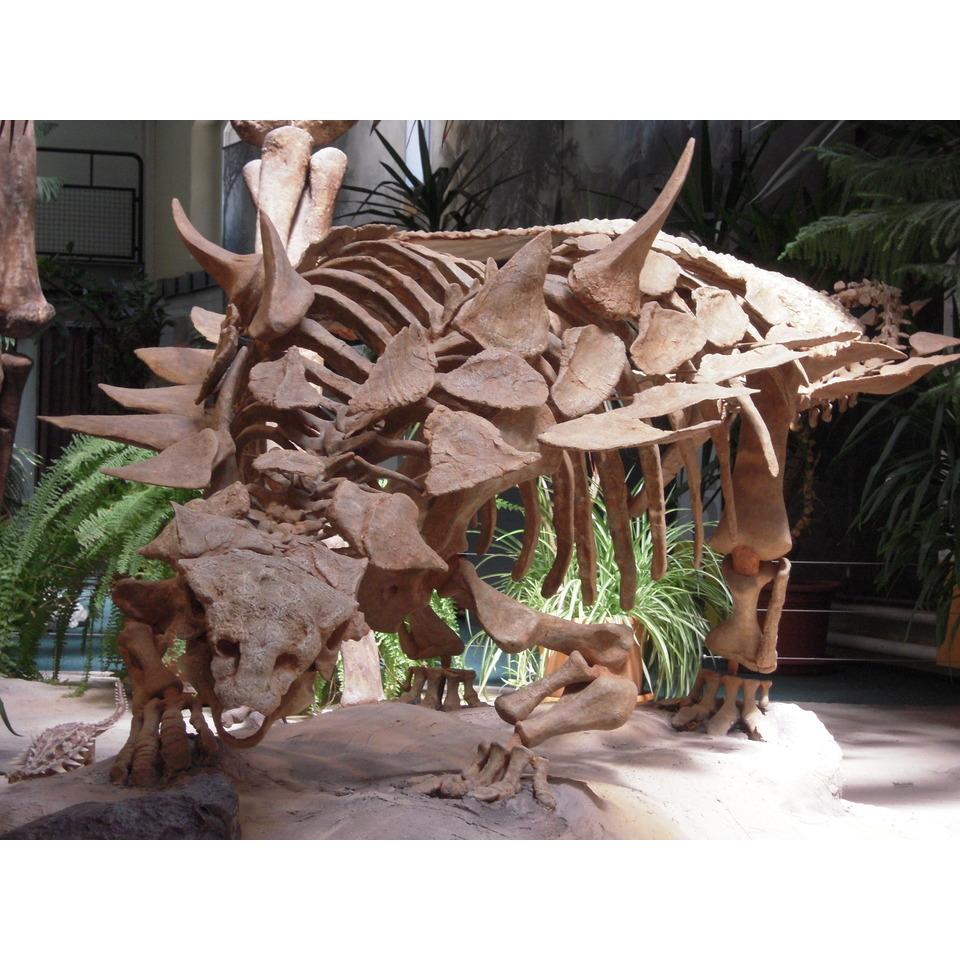Confusion has always surrounded the dinosaur Apatosaurus, which many still refer to as “Brontosaurus.” The mix-up goes back to 1879, when paleontologist Othniel Marsh mistakenly stuck a Camarasaurus head on an Apatosaurus and called it a Brontosaurus. When the mistake was discovered years later, scientists erased Brontosaurus from their books, but the incorrect name still lingered in people’s minds. To add to the confusion, Apatosaurus resembled its close relative, Diplodocus.
Both were gigantic plant eaters, but Apatosaurus had a much sturdier build. Its body looked like an amalgamation of other animal parts brought together in a bizarre combination. Apatosaurus possessed elephant-like “toes” at the bottom of hefty, thick, pillar-shaped limbs. A long, whipping tail held together with 82 bones extended from the dinosaur’s 24.6-ton body. At the front was a long, muscular neck capped off by a tiny head, not unlike that of a modern horse, but full of pegged teeth.The small jaws and head of Apatosaurus have puzzled scientists for decades, since it would seem biologically impossible for a dinosaur of such immense size and weight to feed itself properly through such a small orifice. Paleontologists suspect the dinosaur must have eaten all day. After hours of feasting on tree leaves, ferns, shrubs, cycads, conifers, ginkgos and other plants that were prevalent during the Late Jurassic, Apatosaurus probably waded in water to cool off and to kill parasites before taking brief, standing naps. The eating phase then likely started all over again. For a large carnivorous dinosaur like Allosaurus or Tyrannosaurus, one Apatosaurus must have made quite a beast feast. Apatosaurus, with its massive body, couldn’t have run fast, so it likely stayed with others to form a protective herd. The huge herbivore was also not entirely defenseless. It could crack its long tail like a whip, causing serious damage to would-be attackers, perhaps sending them airborne. Apatosaurus also possessed claws on each of its “thumb” digits. It’s possible that this enormous dinosaur reared up on its back legs and then crashed down on its enemies, jabbing claws into them upon impact.


